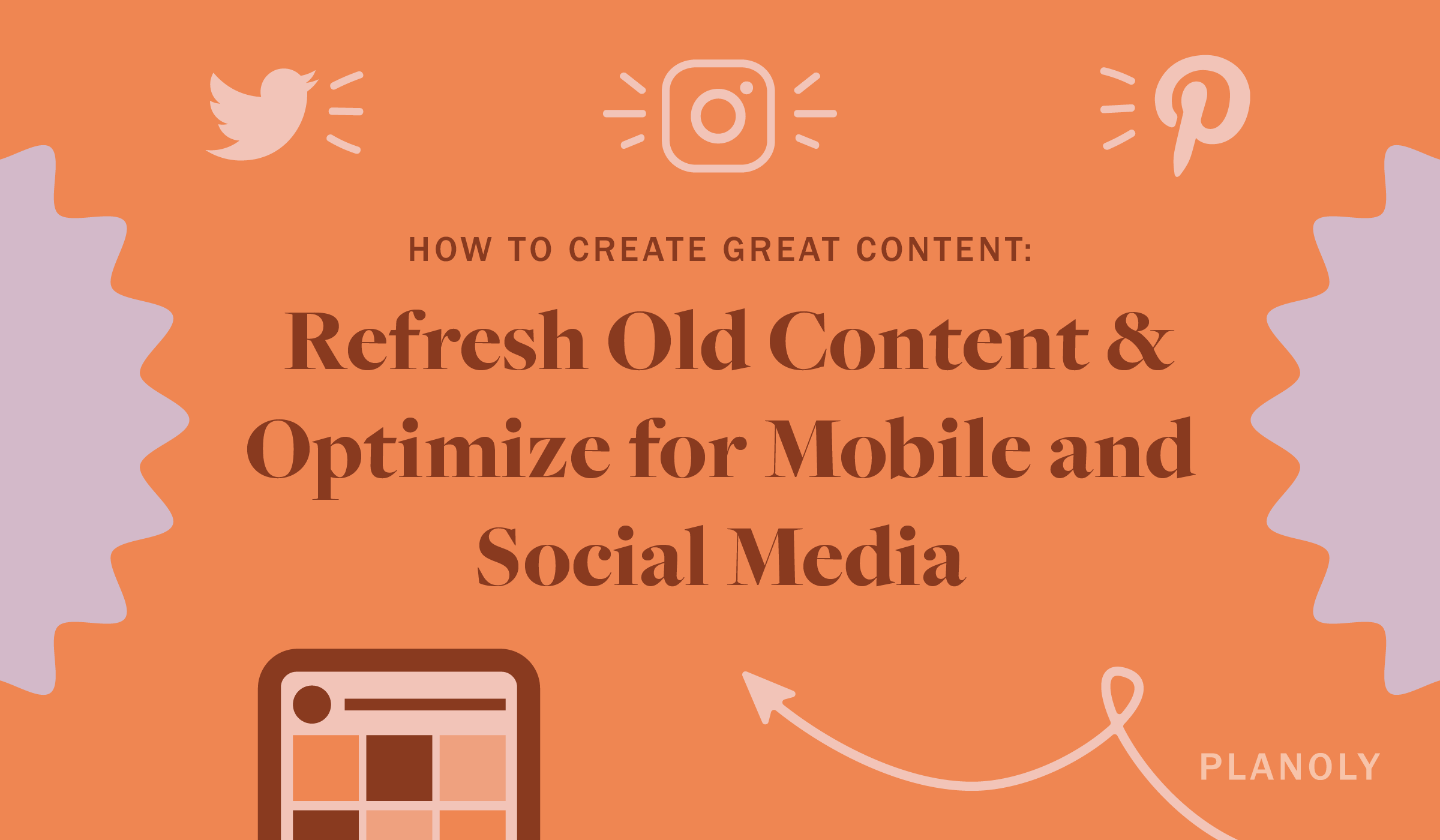Sep 17, 2020
.png)
Sep 17, 2020
Before putting your amazing ideas to work, one of the first things that you need to consider when creating content is search intent (or user intent). The term is meant to describe the purpose–or intent–of an online search. Think of it as the reason why someone searches for anything online. They’re looking to find something specific, and you want your content to be as close to that search query as possible.
There are four very common forms of search intent - informational intent, navigational intent, transactional intent, and commercial intent. Each serves a very distinct purpose and speaks to the agenda behind a search query. Is the search looking for an answer to a question? Are they looking to buy a product? Or are they looking for a specific website? Identifying the nature of their search intent will help you tailor your approach to content creation.
Another way to understand search intent is by focusing on keyword intent. Here, you’re narrowing in on the keywords that your audience uses to refine their search. With it, you can start to optimize your content creation around that very specific keyword.

Great content isn’t always just entertaining, humorous, or an escape from reality. Sure, some of our most beloved content contains those elements. But the very best content is the kind that solves a problem and adds value to your customer’s life.
Content marketing is primarily used the same way your products and services are used: to help solve your customer’s problems and add value to their experiences. When creating content, a primary content pillar is making sure that you’re helping your users. Your content isn’t always about what you want to create. Oftentimes, it’s about what is essential to your audience.
Whether you’re a brand, creative, or influencer, content marketing aims to solve problems. This, of course, isn’t always easy nor a quick process. Creating a framework for how to solve a customer or followers problem is a critical first step to mastering this task. Research the problems your customer is facing, solve that problem, then use your content to relay that resolution to your audience.
Whenever creating content for your blog, a compelling title and meta description is your first step towards authoritative and searchable SEO-friendly content. This is where you entice your reader to click and also alert the Google algorithm that your content is worthy of a high ranking.
Headlines (or title tags) are vital to content discovery. They’re often a quick look into content results following a search engine inquiry. Google states that title tags serve as “the primary piece of information used to decide which result to click on, so it's important to use high-quality titles on your web pages."
Make sure your title tags feature the right keywords and that they match search intent. Typically, you want to keep your title tags short as Google only allows 50-60 characters of a title. So get your point across as quickly and as efficiently as possible.
Secondary to the title tag is the meta description. This is where you provide a description of your content to provide context to the nature of your work. This brief summary of your page helps increase your click-through rates.
Meta descriptions are roughly 155-160 characters. The copy should be enticing enough to generate a click from your readers and unique visitors to your website. Make sure you include an exciting call to action (CTA) and repopulate your keywords.
When you’re creating new content, it’s always important to keep your old content in mind. In fact, you’ll want to link out to that old work in your new work.
Backlinks (or inbound links) are a critical SEO ranking factor. A great approach to backlinking success is to double down on your content by resharing links to previous work in your new content marketing.
Google views backlinks as “votes” from one webpage to another. So if you give an old piece of your content a “vote” of confidence in some of your new work, Google tends to appreciate those backlinks and give those pages preference the more backlinks they receive.
It’s been proven time and time again that internal links can significantly boost your web traffic. Make sure you implement this strategy while building out your content pillars.

Another great way to increase the impact of your content reach is by refreshing old content. This not only works to heighten search engine rankings but ensures that your content is always timely and accurate.
Strategizing and creating new content is a very thoughtful and timely process. And while it’s incredibly effective when done well, so is taking less time and effort to update past content.
Over time, older content becomes less fresh therefore not as important for search engines. By simply updating that that content with updated stats, links, or even just a slight change to the title, will repopulate that work in search engines making it “fresh” again. This is a simple and effective hack top marketers swear by – and so should you!
You can also use this refresh effort to fix any spelling or grammatical errors that you may have missed on the first pass. Updating old content also ensures that your website/blog as a whole is fresh and contains up-to-date information.
As 73% of the global population owns and consumes most of their content via a smartphone–roughly 3.5 billion people–making sure that your content is mobile-friendly is imperative.
Creating great mobile-friendly content also requires understanding that much of your work will need to be marketed on social media. Moreover, recognizing how your audience consumes information on social.
Mobile-friendly content has to be what we like to call snackable. What this means is that the headline has to be snappy, the first few sentences need to draw the reader in, it should be quick and engaging, and everything needs to fit comfortably on the mobile screen. Think about your reader consuming this content while waiting for the train, in line at the grocery store, or while drinking a cup of coffee. Does your content enhance that downtime?
Maybe even more important is your consumer’s ability to access your content in social media. Is it in their Twitter timeline, Instagram Stories, or Facebook feed? Most users tap in through social media on their phones, as opposed to a more traditional approach at their desktop or even on a tablet. Make sure your content is easily accessible and optimized for a modern consumer.

Your content’s keywords should satisfy your audience and search engines. To accomplish this, you’ll need to research potential keywords before creating your content.
Choosing the right keyword for your content is mostly about understanding the needs of your audience (this goes back to search intent). These keywords should be peppered throughout your content, in your URL, and meta description. You’ll need to know what your target audience is searching for to solve their problems with your content or products/services.
What are people searching for? How many people are searching for it? And what is the intent behind the search? Keyword research starts with a great tool. For beginners, try using Google Trends and Google Search Console. Both will give you insight into trending keywords and their search results.
For example, typing “coffee” into a keyword search tool might yield results like this:
This is how you begin to decipher what your target audience is searching for and why. Next, you’ll want to dive into the search volume to see what the demand is for this topic. Each of these steps will help you fine-tune your keyword research and discovery to ensure that your content is the right fit for your target audience.

Images play a critical role in serving up compelling content. Whether or not the images are the primary focus of your content or simply a support factor, optimizing them can help your content reach much further.
Alternate tags (or ALT tags) should be added to all of your images. This is the process of adding keywords and/or title tags to the image file. Updating your image file with ALT tags helps Google find and validate your content through those image files. Google states that “when choosing alt text, focus on creating useful, information-rich content that uses keywords appropriately and is in context of the content of the page.”
Additionally, it’s important to compress your images to make sure large files don’t slow down the speed of your page. There are endless tools to help you do this including TinyPNG and ShortPixel.
Although snackable content is best suitable for daily content consumption, be sure to take some time to create long-form content. Because the fact of the matter is that long-form content ranks best in Google.
Long-form content is authoritative and lends to your expertise as a thought leader in your field. Moreover, there is a direct link between longer content and heightened search performance. Long-form content tends to generate 3x more traffic on average than shorter content.
This kind of content can be anywhere from 900-1200 words or even up to a few thousand words. Of course, longer stories give you more opportunities for subheaders, quotes, links, and more. You also open yourself up to more organic shares from readers. So start working towards creating long-form content as much as you can!

Lastly, make sure you’re writing extremely high-quality content. People want to read something great, something they can learn from, and something they can share with others. It’s up to you to make sure your content meets those standards.
Choose great topics to share with your audience. Topics and themes should be entertaining, thoughtful, answers a question, and/or solves a problem. Great content should always offer something of value. Your readers should leave feeling as if they got what they needed from what you created.
Make sure your posts have structure and are easy for your audience to consume. Use subheaders, break up long paragraphs, and use visual aids to drive home stats/data.
Make no mistake about it, establishing content pillars like those listed above is an essential part of consistently producing great work. Following these guidelines–and others specific to your content–will help you implement a rhythm that ensures every piece of content you produce doesn’t miss the mark.

.svg)
Enjoyed reading it? Spread the word